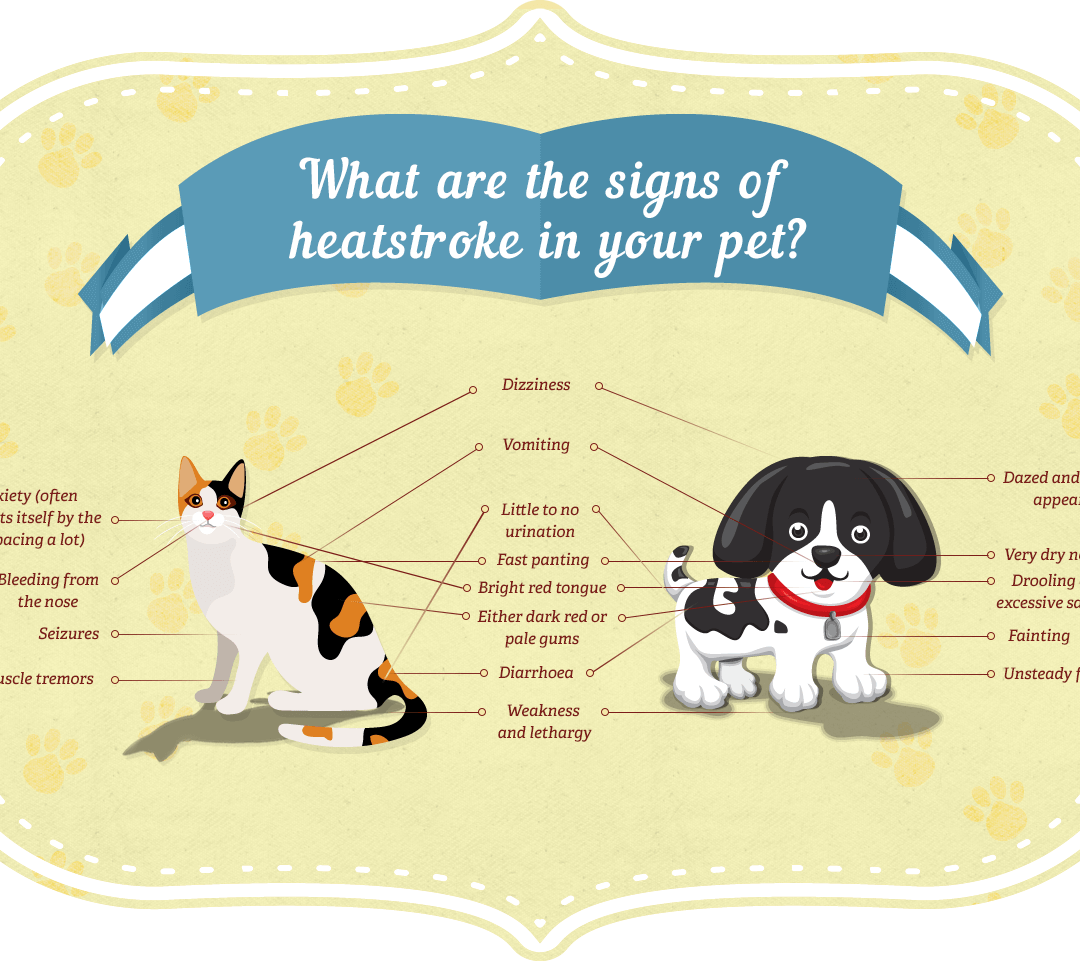As we continue to see high temperatures, heatstroke becomes an increasing concern for our furry friends. While humans have lots of sweat glands to help regulate their body temperature, dogs and cats only have a few in their paws and around their noses. Since they don’t sweat like us, they rely on panting and outside cooling sources to regulate their body temperature. Because pets are more susceptible to heatstroke, it is important to know what heatstroke is, what the signs are, and how to prevent it
What is heatstroke?
Heatstroke is when the body temperature rises above a normal range. This occurs when the body is unable to lose heat as extra heat is generated. It most often occurs in hot and humid environments with poor ventilation, lack of shade, lack of drinking water, or during an abundance of exercise in hot temperatures. Heat stroke can cause organ damage and quickly become fatal if not immediately treated.
What are the signs?
Cats and dogs have some similar signs of heatstroke as well as some that differ. Similar signs include: dizziness, vomiting, lack of urination, rapid panting, bright red tongue, dark red or very pale gums, diarrhea, and lethargy. Dog specific signs include: appearing confused, dry nose, excessive drooling, fainting, unsteady on their feet. Cat specific signs include: anxiety, bleeding from the nose, seizures, and muscle spasms. If your pet is exhibiting any of these signs, contact your veterinarian immediately to seek treatment.
How do I prevent heatstroke in my pets?
Always make sure your pet is in an appropriate environment. Areas should be cool, shaded, and well ventilated. Your pet should always have access to plenty of water. Never leave a pet alone in a hot car. Avoid strenuous activities and exercise when it is hot. Do not leave your pet on concrete, sand, asphalt, or other heat reflective surfaces.
While all animals are susceptible to heatstroke, it is important to note there are some factors that can increase your pets risk. These factors include: obesity, flat-faced breeds (e.g. pugs, bulldogs, persians, himalayas, etc), heart disease, breathing difficulties, neurological disease, age extremes (young or old), long or thick hair coats, dehydration, and excessive exercise.
What do I do if I think my pet has heatstroke?
If you suspect your pet has heatstroke, remove them from the environment immediately. You can apply tepid or cool water to your animal. Never use ice-cold water as this can aggravate the issue. It is important that you take your pet to the nearest veterinarian right away.
Please remember that heatstroke is an emergency and you should take your pet to see the vet. Even if they appear to be recovering, long-term damage is always a concern. Be sure to keep your pet in a cool environment with access to lots of water this summer!
Source & Photo Credit: https://www.rspcapetinsurance.org.au/pet-care/health/heatstroke-hyperthermia

